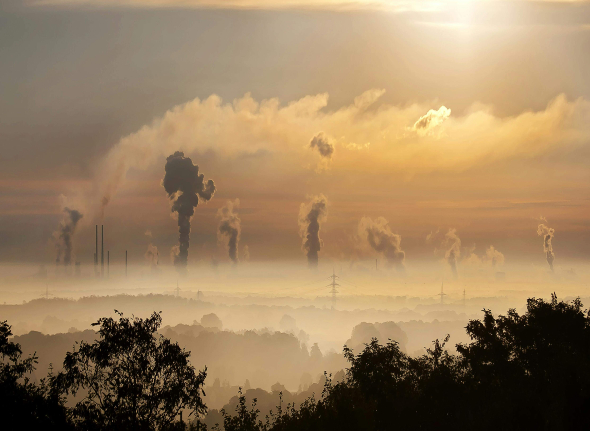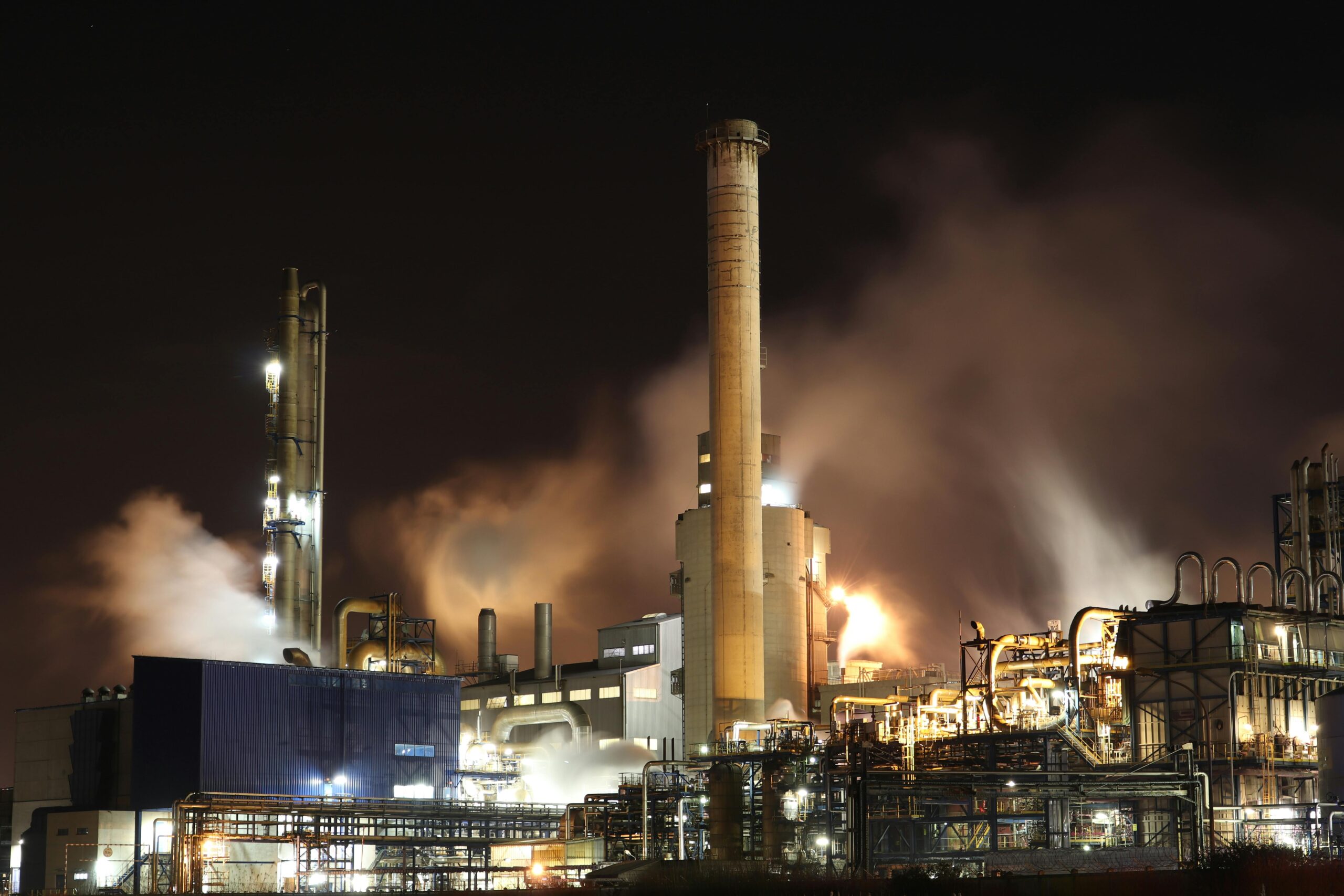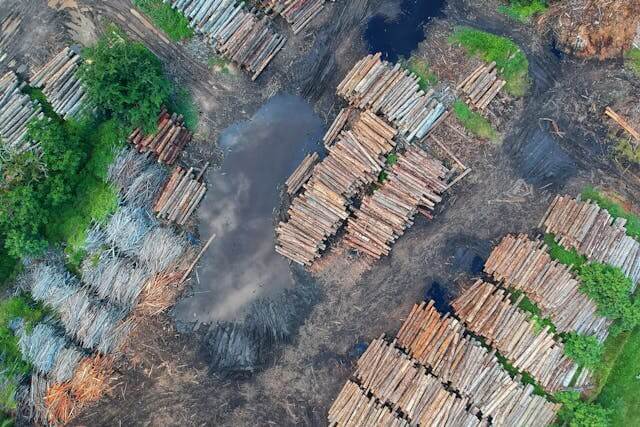The Top Five Climate Change Conundrums
You might not notice it around you, but the danger is real! Climate change is an escalating problem across our various worldwide societies, damaging our precious environment, that must be averted before it leads to an irreversible catastrophic calamity. Here I will examine and explain the assorted areas of the ongoing issue and present some options as to how we as a whole community take a U-turn to save our planet from our own errors.


1. Global Warming
Kicking off this list of international atrocities is none other than the titular global warming, a predicament that has gradually shaped the world over the previous decades into what it is today, for better or worse. Global warming is primarily driven by the emissions of greenhouse gases, which are produced by the burning of fossil fuels. Fossil fuels used in industry production often consist of coal, oil and natural gasses and are key to the way society operates without a significant number of people being aware of their use. The intense level of heat emitted has resulted in atmospheric temperatures skyrocketing!
You might think this is a good thing as for those of you reading who live in constant cold conditions, it is a nice change of pace. However, I can assure you this is undoubtably not the case! The consequences are appalling: a threat to the ecosystem’s survival; a spread of disease and sickness; high mortality rates; natural habitat loss; sea levels increasingly rising; species becoming extinct at far hastier rates; and damage to infrastructure, putting thousands of humans themselves in danger. So how do we combat this?
Renewable Energy: Energy that originates from utilizing renewable natural resources to maintain a sustainable power grid far into the future. Examples include solar energy, wind power and hydro power.
Carbon Neutrality Initiatives: Installing carbon capture and nature-based solutions like large-scale reforestation can help industries achieve net-zero emissions. Net-zero refers to achieving a balance between the greenhouse gases emitted into the atmosphere and those removed from it, resulting in no net increase in atmospheric greenhouse gases.

2. Air Pollution & Disease
The air we breathe in is fundamental. After all, we wouldn’t be alive without it! Yet a lingering quandary, partly a result of the previous subject, is the pollution of that oxygen. While some pollution is caused by no fault of our own, such as volcanic eruptions churning harmful ash out into the skies above, more than less of the blame for this can be pitted on humanity’s shoulders.
As already stated, burning fossil fuels in factories and using them to power our automobiles is having a damaging effect on us, but are you actually aware of what it’s doing to our bodies? Exposure to air pollution for lengthy periods of time can cause numerous detrimental infections and diseases to form within, such as Asthma, Bronchitis, Lung Cancer, Immune System Disorder, Pneumonia, Strokes, Heart Disease and death. For some illnesses, mere contact with another human will spread the disease. Think of the amount of pressure and stress then placed on the national health services trying to prevent a gargantuan number of deaths. So, what are our responses to air pollution?
Sustainable Transportation: Rather than constantly using your own automobile constantly, it would be more beneficial for yourself and the environment as a whole to use a form of public transport (such as the Bee bus Network if you are a Manchester dweller) or cycle to your destination on a bike as this would lead to you getting healthier overall, or even walk if the journey isn’t too far, since this will reduce unnecessary emissions, better your physical health and even possibly improve your mental health.
Stricter Air Quality Regulations: Mandating the use of advanced pollution control technologies, such as carbon filters and electrostatic precipitators in industrial processes can curb toxic emissions.
Clean Energy Solutions: Transitioning to cleaner household energy sources, like solar cookstoves and electric heating, can reduce indoor air pollution.
3. Deforestation & Habitat Loss
This next one should need no introduction, but for those who are still a little hazy, here is a brief reminder. Forests are quite literally the lungs of our planet, absorbing carbon dioxide and releasing oxygen. Yet, deforestation continues at an alarming rate. Since 1990, approximately 420 hectares of forest have been lost due to human activities like agriculture and logging, which have only increased due to humanity’s largening population which in turn leads to higher consumerism.
The Amazon rainforest, in particular, has seen significant deforestation, with projections indicating potential losses of up to 23.7 million hectares over five years. Humans inadvertently destroy more acres of peaceful forestry with greenhouse gas emissions often providing the spark that triggers devastating wildfires, incinerating masses of grass, trees, lakes etc. Both purposeful and non-intentional methods have the same staggering result: loss of wildlife. With habitats being inconsiderately destroyed, animals are left without homes to reside, and their sources of food are simultaneously wiped out, meaning the likelihood of their survival isn’t favourable and could result in that species becoming severely endangered or even extinct in extreme circumstances!
How would you feel if you were the one committing these acts to appease the customers of the products these goods produce, at the expense of so many adorable innocent critters? I certainly wouldn’t be able to live with it! While there are schemes in place to plant new trees every time one is felled, it simply is not enough, and the consequences of our greed will soon begin to show as our ecosystem falls further out of balance. The remedy…?
Reforestation Projects: Participating in or donating to tree-planting initiatives can help restore many lost forests.
Sustainable Products: Only using wood and paper products licenced by legitimate organisations like the Forest Stewardship Council ensures they come from responsibly managed forests.
Conservation Policies: Supporting policies that protect existing forests and promote the use of land sustainably can curb deforestation.

4. Ocean instability
This topic is less often talked about, yet it is still a grave issue spanning all Seven Seas. The ocean is vital for life on Earth, absorbing a significant amount of solar radiation and distributing it as heat via currents, as well as influencing rainfall by developing clouds from evaporation. So, the ocean plays a key role in global weather patterns; without the ocean’s assistance, climate regulation would rapidly grind to a halt and the ecosystem would suffer as it experiences unnatural changes to its way of operating!
The ocean provides a substantial source of protein and other nutrients for billions of people, many relying on the ocean for their livelihoods, including fishing, tourism, and shipping. Aside from benefitting dry-land life, the ocean is also home to a vast array of aquatic creatures, including many we presume have yet to be discovered, which would add to the planet’s biodiversity. Marine ecosystems are interconnected and vital for sustaining food chains, with many species relying on the ocean for sustenance.
So, after explaining why the ocean, which takes up 71% of the surface world, is so crucial, here are the reasons it has become endangered. Rising temperatures from CO2 have caused ocean acidification (the decrease of pH in saltwater which triggers ocean water to drastically heat up) which is harmful to marine life, dissolving the shells of creatures such as clams and oysters. Similarly, marine life is threatened by overfishing, which depletes fish populations in order for humans to enjoy a meal. Moreover, the ocean is shockingly treated with such little respect that it has become a junkyard for humans to annually deposit tonnes of waste plastic, approximately 0.5% of the world’s overall plastic waste. This is catastrophic since it is estimated marine plastic contributes to the death of more than 100,000 marine mammals a year alone.
From entanglement and injury to ingestion and toxic contamination, the fishes’ great enemy also spreads disease across the waters which many contract and suffer excruciating deaths from! Without sea-life and ocean stability, or own health and ecosystem will be affected negatively… So, how do we abort before it’s too late?
Single-Use Plastics: Avoid plastic bags, straws, and utensils, opting for reusable alternatives to minimise plastic waste and participate in clean-up efforts, possibly joining local beach clean-ups to remove plastic and debris from coastal areas.
Improve Wastewater Management: Support infrastructure improvements that prevent untreated wastewater from entering oceans, including developing sustainable systems to reduce pollutants such as plastic, oil, and chemicals.
5. Fast Fashion
For the final topic, you may be perplexed at what fashion has to do with climate change and the environment, hence why this last matter will flabbergast you the most. With a focus on ultralow prices and condensed production cycles, fast fashion gets new styles to customers at a record pace but concurrently generates sizable environmental and social challenges. At first glance, the idea of a hasty clothing production with equally as fast suppliers sounds remarkable, however, in reality, it presents a series of dilemmas for the environment.
Fast Fashion is a relatively new manufacturing industry phenomenon that exploits workers and kills animals! It wasn’t always as destructive as clothes shopping used to be far more occasional. THEN, in the 1980s, clothes became cheaper, trends sped up, and shopping became a regular hobby. Fast Fashion arrived and the global chains now dominate our high streets and online shopping. By the 2000s, Fast Fashion was in full swing. In terms of pollution, cheap toxic textile dyes used make the fashion industry one of the largest polluters of clean water globally. As well as this, Polyester is one of the industry’s most popular fabrics, but it is derived from fossil fuels, contributing to global warming, especially when it sheds microfibres that add to increasing levels of plastic in the oceans when washed.
In terms of exploitation, there’s a considerable human cost; workers toiling in dangerous environments for low wages and extensive hours have no human rights! Further down the supply chain, farmers may work with toxic chemicals, and brutal jobs that can have devastating impacts on their physical and mental health, a plight frequently dismissed out of greed. And in terms of animal death, the toxic dyes and microfibres in waterways are ingested by land and marine, having harmful side-effects. And when animal-derived products such as leather, fur, and even wool are used in fashion directly, animal welfare is put at risk. For example, numerous scandals have revealed real fur, such as cats and dogs, has been disguised as faux when sold to shoppers! Luckily, this trio of barbarities surrounding fast fashion all have easy resolves…
Awareness: Reading the label to ensure what you’re buying is made from eco-friendly material and buying less so wearing more reduces consumption and thus demand for more product.
More Sustainable Products: It is unnecessary to buy the product of every new popular brand, so simpler purchases from safe online websites such as Vinted would be more advisable for trying to reduce the spread of harmful substances globally.
To learn more about fast fashion, check out this article on Curriculum for Life.

Find out more
If this article has made you realise the gravity of the danger posed by progressing climate change, and you want to further discover what else is plaguing Earth from its crust to its core, here are some links to websites that can delve deeper into the issues the next generations of humanity are faced with and the antidotes to restore our world to its natural health. These also include a link to a site where you can find out about the City of Manchester’s attempts to tackle discarded waste, with an ambitious, unique project which aims to create value from waste to benefit Greater Manchester.
Learn about the Greater Manchester Renew Project
Find out more about how Greater Manchester is tackling climate change.
Related
Why Littering is Everyone’s Problem
[rt_reading_time...

Save carbon through walking, cycling and Bee Network
[rt_reading_time...
